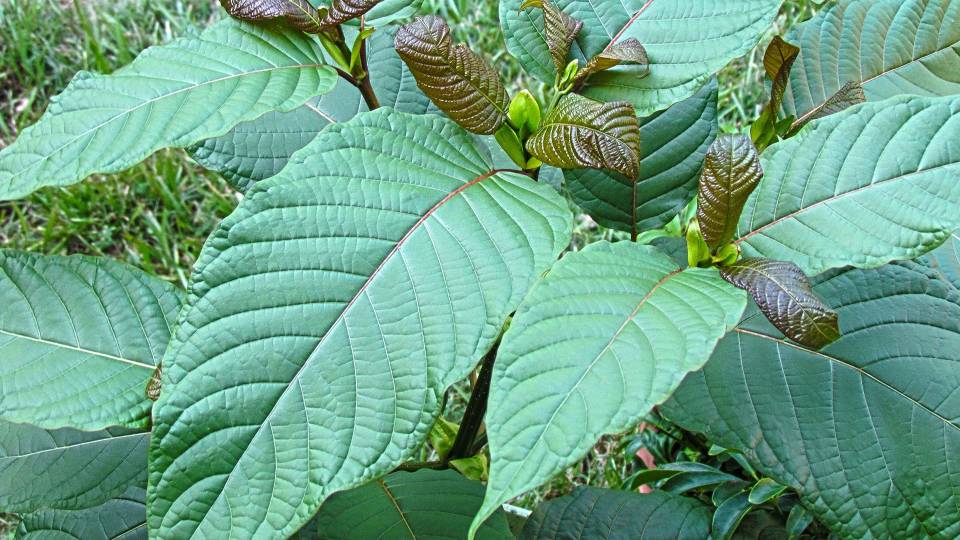One Week Until Kratom Components Are Banned In The U.S.
Editor's Note: As a long time kratom user, this news is devastating to me and so many others who have found great relief from chronic pain, anxiety, PTSD, depression, ADD and so much more because of this incredible, medicinal plant that is a nontoxic alternative to big pharma's addictive and dangerous pills. Starting next week, kratom users will be deemed criminals and face the same jail sentences as violent thugs. Hopefully, the botanical lobby and their foot soldiers will be able to turn this around.
Mitragynine and 7-hydroxymitragynine, two substances made naturally by kratom, a widely used medicinal plant, will be placed on Schedule I of the U.S. Controlled Substances Act, effective September 30, 2016. The announcement was published in the Federal Register by the acting administrator of the Drug Enforcement Administration on August 31.
In DEA vernacular, the federal Schedule I designation is defined for drugs with 1) no currently accepted medical use, 2) a high potential for abuse and 3) a lack of accepted safety for use under medical supervision. The U.S. Attorney General has delegated such scheduling authority to the head administrator of the DEA.
Does kratom have legitimate medical uses?
But since the announcement, a vocal community of kratom users have objected to the scheduling’s de facto criminalization of the plant, citing the plant’s value in self-medication for chronic pain, anxiety and post-traumatic stress disorder, depression, and recovery from opioid or alcohol dependence.
Since I first wrote about the kratom ruling, I’ve received over 200 emails, Twitter and Facebook direct messages and phone calls from kratom users who fear the loss of an herbal remedy that has provided them with substantial benefit, in many cases better than with prescription drugs and with fewer side effects. A petition calling on the White House to intervene in the proposed ban has attracted over 134,000 signatures. Advocates also marched on the White House on September 13.
However, regulatory authorities do not consider self-medication to be evidence of medical use. In response to the DEA administrator query to the Department of Health and Human Services as to known medical use of kratom, the DHHS assistant secretary responded that “there are currently no investigational new drug applications or approved new drug applications for mitragynine and 7-hydroxymitragynine,” and that “the HHS has no objection to the temporary placement of mitragynine and 7-hydroxymitragynine into schedule I of the CSA.”
But as an herbal dietary supplement, few incentives exist for a kratom manufacturer to sponsor an investigational new drug application for a substance that, until the end of this month, could be sold by anyone with access to raw plant material.
Kratom user experiences like those I’ve received were not represented in the DEA’s notice of intent. Forbes contributor David DiSalvo reported on Monday:
Two congressmen have penned a “dear colleague letter” asking that the DEA ”delay a final decision on the placement of kratom as a schedule I [and] provide ample time for public comment on this significant decision,” which the agency has so far declined to do. Congressmen Mark Pocan (D-Wis.) and Matt Salmon (R-Ariz.) drafted the letter that will be circulated to every member of Congress. The kratom community is now reaching out to their representatives to sign onto the Pocan-Salmon letter.
The DEA has not yet discussed how the temporary scheduling will be enforced and what the penalties will be for the sale or possession of the plant material. Federal penalties for trafficking of controlled substances are often based on the amounts of the substance and its chemical form.
A brief history of mitragynine and 7-hydroxymitragynine
In subsequent posts, I’m going to take apart the pharmacology of mitragynine and its relatives, based on twopeer-reviewed publications that I’ve reported on previously for C&EN, short for Chemical & Engineering News, the official weekly magazine of the American Chemical Society. (I’m pleased to say the C&EN also published the latest of my articles in Spanish.)
As an introduction, the two plant chemicals are called alkaloids, a broad term for nitrogen-containing compounds like caffeine from coffee. Mitragynine is the predominant alkaloid, 7-hydroxy is present in lower amounts, or not at all. More than 20 such alkaloids have been isolated from kratom.
These two kratom alkaloids derive their names from the scientific designation for the tree Mitragyna speciosa (Korth.). (That classification is attributed to a botanist with the Dutch East Indies Service, Pieter Willem Korthals, who first described the plant in 1839, recording that the stigmas of its flowers resembled a bishop’s mitre. It’s common for early taxonomical names to include an abbreviation for the identifying botanist.)
In the first sentence of their notice of intent, the DEA describes these two kratom chemicals, mitragynine and 7-hydroxymitragynine, as opioids–a broad scientific term that now carries the visceral, colloquial baggage of strong prescription opioid pain relievers like morphine and fentanyl. That baggage comes in the form of a far-reaching “opioid epidemic” characterized by 18,893 overdose deaths related to prescription opioids in the U.S. in 2014, with another 10,574 overdose deaths involving the illicit morphine relative heroin.
Does the epidemiology support such an association of kratom with strong opioids?
The American Kratom Association estimates there are three to five million people using kratom in the U.S. A recent report from the Centers for Disease Control and Prevention cited a total of 660 poison control calls for kratom side effects between 2010 and 2015. The DEA cited 15 reports of fatalities where kratom constituents were present; 14 of these cases involved the presence of other, potentially lethal drugs. Another nine deaths in Sweden involved a kratom product that contained a relative of the prescription opioid pain reliever tramadol.
Forbes contributor Jacob Sullum, also a senior editor at Reason magazine, wrote a scorching rebuke of the DEA’s citation of kratom’s risks that, in his view, “provides an illuminating window on the prohibitionist mindset, which dresses pharmacological phobias in the garb of science.”
One caveat is that kratom use and side effects are not as systematically monitored as those for prescription or illicit opioids. So it’s possible that kratom may pose some dangers that are not captured by these data.
Potential for kratom adulteration
Another reasonable concern is that, as an herbal supplement, kratom can be contain variable amounts of the active constituents or be accidentally or intentionally adulterated with other chemicals. Herbal products imported from India will sometimes contain toxic amounts of heavy metals; weight loss supplements or “men’s health” products loosely advertised for erectile dysfunction will often contain actual prescription drugs or their relatives. But kratom advocates contend that these issues are a result of the 1994 Dietary Supplement Health and Education Act and the lack of strong enforcement by FDA of their guidance on Good Manufacturing Practices for supplements.
Eric Boodman at STAT News wrote earlier this month about how the kratom users’ community internally polices kratom suppliers. Therein, an FDA spokesperson admitted that the agency has very little power over any herbal supplement other than issuing import bans and seizing products for which drug claims are made.
Risk perspective
As for the 660 poison control center calls reported by CDC scientists, the magnitude of the public health risks depends on ones viewpoint. Forbes contributor and emergency physician Robert Glatter, MD, wrotethat parents, teachers, teens and physicians should know about these risks. But the CDC report also deserves perspective: laundry detergents pods, albeit used by more people than kratom, were responsible for 7,887 child poisonings in the first eight months of 2016 alone.
I solicited the perspective of a forensic toxicologist who is well-published on illicit drugs in recent overdoses and poisonings, from highly potent relatives of fentanyl to the dozens of chemicals showing up in K2 and Spice products.
While not authorized to speak on behalf of their organization, the scientist told me, “Of all things to be worried about at this time, I’m not sure kratom should even make the top 10.”
For more health and pharmaceutical news and commentary, follow me on Twitter @DavidKroll






















